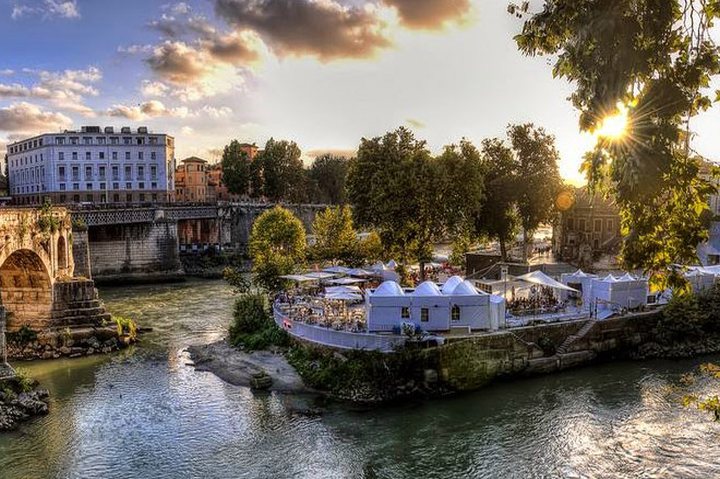Tiber Island: When tradition meets green technology
Monumental, a timeless place. We are talking about the Tiber Island, the beating heart of the capital of Italy.
A symbolic place of Rome, it is a strip of land on whose territory there are the Hospitals of the Fatebenefratelli and the Israelite Hospital, the Basilica of St. Bartholomew built on the Temple of Aesculapius.
Not only that, for twenty-three years it has hosted “Isola del Cinema” which for two months makes citizens and tourists from every corner of the planet dream.
THE LEGEND
Today the Tiber Island is the nerve center of the city of Rome. But what does it represent for the Romans? What are the myths built around this magnificent place?
According to an ancient legend, the only urban island of the Tiber River was formed when the Romans, after expelling King Tarquinius Superbus, as a sign of hatred towards the tyrant, threw there a huge amount of sheaves of wheat collected from the land belonging to the family of the last king of the city.
Those sheaves, piled one on top of the other, favored an accumulation of mud and debris that formed the first nucleus of the island. Practically a landfill.

“RENEWABLE” REBIRTH
But in this magical place, inexorably marked by history, the Tiber Island association has launched a pilot project to transform this place into a totally green historical-urban territory with zero energy impact through the integration of a set of self-sustainable energy production technologies: geothermal, micro-wind, micro-water turbines, photovoltaic roofs and windows.
And for this last aspect, it has decided to adopt the technologies of
Glass to Power
, a spin-off of the University of Milan Bicocca founded in September 2016.

THE TIBER IS GREEN
Between the two banks of the Tiber, ideas flourish. What about the green dam that the Lazio Region had installed near the mouth, to intercept the great polluter of the seas: plastic. Thus, 460 kg of waste were intercepted, which would have further deteriorated the marine habitat. In the first month, the small plant installed collected half a ton of plastic.
The technicians proceeded to analyze an initial sample of 114 kg, discovering that packaging makes up a percentage of 46.27%, while the rest is made up of various fractions. Plastics, once they come into contact with seawater, deteriorate, become microplastics that are ingested by fish and then inexorably end up on our tables.
This interception system, made by
Castalia Operations srl
, consists of polyethylene barriers that block floating waste by accumulating it in a specific area, from which it is subsequently collected. On the other hand, Corepla, the national consortium for the collection, recycling and recovery of plastic packaging, will take care of the collection and recycling of recoverable plastic.
